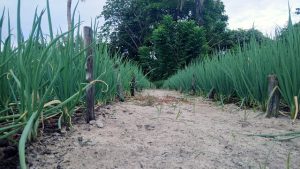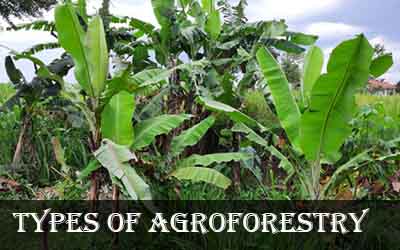The marriage of agriculture and forestry might sound like a paradox to some. However, this blend, known as agroforestry, represents an approach to land use that taps into the strengths of both sectors to create environmentally friendly, economically viable, and socially beneficial solutions.
Agroforestry can be defined as a dynamic, ecologically based, natural resources management system that, through the integration of trees on farms and in the agricultural landscape, diversifies and sustains production for increased social, economic, and environmental benefits for land users at all levels.
Instead of seeing agriculture and forestry as distinct entities, agroforestry seeks to meld their advantages, producing not just crops, but also timber, fruits, and other non-timber forest products, while also offering services such as carbon sequestration, biodiversity conservation, and watershed protection.
Importance and Benefits of Integrating Agriculture and Forestry Practices
Integrating agriculture and forestry brings forth a myriad of advantages:
Ecological Benefits
Agroforestry practices can improve soil health by reducing erosion, increasing soil organic matter, and enhancing soil biodiversity.
Moreover, these systems can bolster biodiversity by providing habitat for various species and promoting beneficial interactions between plants and animals.
Economic Resilience
Diversifying agricultural landscapes means diversifying income. Farmers can reap financial benefits from multiple sources, be it from crops, timber, fruits, or other forest products. This diversification can also act as a buffer against market or climate-related crop failures.
Climate Change Mitigation
Trees sequester carbon dioxide, making agroforestry a potent tool in the fight against climate change.
Beyond carbon sequestration, the shade provided by trees can reduce the need for irrigation and protect crops from the extreme conditions induced by a changing climate.
Sustainable Resource Use
Trees in agroforestry systems can be a source of sustainable wood, reducing the pressure on natural forests.
Cultural and Social Benefits
Many traditional farming communities have practiced agroforestry for generations. Recognizing and promoting these practices can preserve cultural heritage and provide social benefits, including communal resource management and strengthened community ties.
The Relationship Between Agriculture and Forestry
At first glance, agriculture and forestry might seem to occupy different ends of the land-use spectrum.
One focuses on the short-term cultivation of crops for food, feed, and fiber, while the other centers around the long-term growth and harvesting of trees for timber, fuel, and other products. Yet, the boundary between them is permeable and full of potential.
Agroforestry hinges on the idea that when trees or shrubs are intentionally integrated into crop and animal farming systems, they can complement and enhance each other.
Trees can provide shade, act as windbreaks, and contribute organic matter to improve soil quality all of which can benefit crops.
Major Types of Agroforestry Systems
Agroforestry, with its multifaceted approach to sustainable land use, manifests in various systems tailored to specific environmental conditions, cultural practices, and economic needs.
These systems leverage the strengths of both agriculture and forestry, delivering unique advantages.
Silvopastoral Systems
Silvopastoral systems integrate trees, pastures, and livestock. Trees are strategically positioned to provide shade, fodder, and even fruit, while livestock graze below.
These systems can improve animal welfare by offering shade and reducing heat stress. Trees can also provide supplementary fodder, especially during dry seasons when pastures might be scarce. Additionally, the manure from grazing animals enriches the soil, benefiting the trees.
Silvoarable Systems (Alley Cropping)
In silvoarable systems, crops are grown between rows of trees. This arrangement allows farmers to harvest both the crops and tree products, such as fruits, nuts, or timber.
The trees act as windbreaks, protecting the crops. Their deep roots can bring up nutrients, benefiting shallower-rooted crops. The shade from trees can also reduce the need for water and protect against sun damage.
Forest Farming (Understory Cropping)
Here, the forest’s understory is cultivated, with products ranging from medicinal herbs to mushrooms, all grown under the canopy of an established forest.
The forest canopy provides a stable microclimate, protecting understory crops from extreme weather conditions. Such systems also promote biodiversity and sustainably harvest non-timber forest products.
Riparian Buffer Strips
These are vegetated strips (often with trees and shrubs) alongside rivers and streams within agricultural lands.
They prevent soil erosion, filter out pollutants from runoff, enhance aquatic habitats, and reduce the risk of flooding by stabilizing riverbanks.
Windbreaks and Shelterbelts
Linear plantings of trees and shrubs designed to reduce wind speed across open areas.
They protect against soil erosion, enhance crop yields by reducing wind damages, and can provide habitats for wildlife. In colder regions, they can also act as snow barriers.
Home Gardens and Urban Agroforestry
Multi-layered systems close to homes or within urban areas, integrating trees, shrubs, crops, and sometimes livestock.
They enhance food security, increase urban biodiversity, provide recreational spaces, and can even reduce urban heat islands.
Types of agroforestry trees
See below;
Nitrogen-fixing trees
Examples: Leucaena leucocephala, Gliricidia sepium, Acacia species.
Benefits:
- Enhances soil fertility by converting atmospheric nitrogen into a usable form for plants.
- Reduces the need for chemical fertilizers, thus saving costs and minimizing environmental impacts.
Fruit trees
Examples: Mango, Avocado, Guava, Orange.
Benefits:
- Provides an additional source of income.
- Enhances biodiversity by attracting various birds and insects.
- Offers shade, reducing the need for irrigation.
Timber and fuelwood trees
Examples: Gmelina arborea, Eucalyptus species, Teak.
Benefits:
- Potential source of income when matured and harvested.
- Supplies wood for local uses, reducing pressure on natural forests.
- Sequesters carbon, assisting in climate change mitigation.
Fodder trees
Examples: Moringa oleifera, Albizia lebbeck, Ficus species.
Benefits:
- Provides nutritious feed for livestock.
- Reduces dependence on external fodder sources, ensuring food security for animals.
Medicinal trees
Examples: Neem, Ailanthus excelsa, Drumstick tree (Moringa oleifera).
Benefits:
- Source of traditional and modern medicines.
- Potential for cultivating a niche market with organic or naturally sourced medicinal products.
Shade trees
Examples: Banana, Coconut, Albizia saman.
Benefits:
- Provides shade for understory crops, reducing evapotranspiration.
- Improves microclimate, making it favorable for crops like coffee and cocoa.
Alley cropping trees
Examples: Leucaena leucocephala, Gliricidia sepium, Pigeon pea.
Benefits:
- Trees are planted in rows with annual crops grown between them.
- Enhances soil fertility, provides shade, and reduces soil erosion.
Challenges and Considerations in Agroforestry
While agroforestry presents a plethora of benefits, its adoption and effective implementation are not without challenges.
These challenges can span socio-economic, ecological, and educational domains. Addressing them requires a comprehensive understanding and tailored interventions.
Land Rights and Ownership Concerns
Land tenure refers to the rights individuals or groups hold in relation to land. Unclear or insecure land tenure can hinder the adoption of long-term sustainable practices like agroforestry.
Challenges
-
- Farmers might be reluctant to invest in long-term tree planting if they’re unsure about their continued access to the land.
- Overlapping or conflicting land claims can lead to disputes, potentially disrupting agroforestry initiatives.
- Land reforms or redistributions can also impact long-term agroforestry investments.
Solutions
Clear delineation of land rights, community involvement in decision-making, and legal support can pave the way for more secure agroforestry practices.
Economic Feasibility and Market Demand
The economic viability of agroforestry systems depends on the costs of implementation versus the potential returns from the diversified products.
Challenges
-
- Initial costs of transitioning to agroforestry might be high for some farmers, especially for purchasing saplings or forgoing immediate crop yields.
- Market fluctuations can affect the profitability of agroforestry products.
- Some agroforestry products might lack established markets or face challenges in market access.
Solutions
Financial incentives, subsidies, or grants can help farmers transition. Moreover, developing local and international markets for agroforestry products and ensuring fair trade practices can boost economic feasibility.
Knowledge Gap and the Need for Training
Agroforestry requires a blend of knowledge from both agriculture and forestry. A lack of understanding can hinder its effective implementation.
Challenges
-
- Farmers might be unfamiliar with the best tree species to integrate or how to manage them.
- Mismanagement due to lack of knowledge can lead to reduced yields or even ecological damage.
- Traditional agroforestry knowledge might be lost as communities modernize, leading to a loss of valuable insights.
Solutions
Community training programs, knowledge-sharing platforms, and incorporating traditional wisdom can bridge the knowledge gap. Partnering with agricultural extension services can also facilitate the dissemination of best practices.
Ecological Considerations
While agroforestry inherently promotes ecological balance, the specifics of implementation can have varied environmental impacts.
Challenges
-
- Introducing non-native tree species can have unintended ecological consequences, potentially harming local biodiversity.
- Incorrectly managed systems might not deliver expected environmental benefits, such as soil conservation or water regulation.
- Overharvesting or improper management can degrade the very ecosystems agroforestry aims to enhance.
Solutions
Ecological impact assessments before implementing agroforestry practices can guide decisions. Continuous monitoring and adapting based on feedback from the environment ensure that agroforestry systems remain sustainable.

Types of agroforestry technologies and The Future of Agroforestry
The integration of agriculture and forestry, as seen in agroforestry, is not just a nod to ancient practices but a visionary step into the future.
As global challenges mount, from climate change to food security, agroforestry stands as a promising bridge to sustainable solutions. Let’s explore what the future might hold for this dynamic field.
Innovations and Advancements in Agroforestry Practices
- Bioengineering and Tree Breeding
- Integrated Pest Management
- Agroforestry and Agri-Tech
Role in Climate Change Mitigation and Adaptation
- Carbon Sequestration Powerhouse
- Resilience Against Extreme Weather
- Diverse Ecosystems as Safeguards
Potential for Global Food Security and Sustainability
- Diversified Food Sources
- Sustainable Intensification
- Empowering Smallholder Farmers
- Water Conservation and Quality
Conclusion on the Types of agroforestry
From the shade-giving trees of silvopastoral systems benefiting livestock to the protective rows of windbreaks and shelterbelts, the different types of agroforestry systems showcase the adaptability and diversity of integrating trees into agricultural landscapes.
Silvoarable systems or alley cropping balance crop production with tree benefits, while forest farming taps into the bounty of forest understories.
Riparian buffer strips play crucial roles in safeguarding our waterways, and urban agroforestry brings green, productive spaces to our cities.
In an era marked by rapid environmental changes and pressing food security concerns, agroforestry emerges as a beacon of sustainable agriculture. Its significance cannot be understated.
Now, having explored the expanse of agroforestry, it’s not the time to just appreciate its depth and potential but to learn more, and perhaps even implement some of its practices.
Whether you’re a farmer considering diversifying your land, a student passionate about sustainable agriculture, or simply someone curious about innovative solutions to global challenges, agroforestry holds a treasure trove of knowledge and potential for you.
Recommendations
Best precision agriculture technologies
How To Become An Agriculturist

